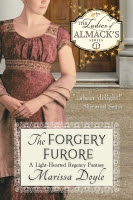Although this week is all about shadows (did you get to see the eclipse yesterday? )summer for me summons thoughts of sunshine and green...and, occasionally, big white horses. Enjoy this retro blast from 2011.)
Our first summer excursion is to Wiltshire, a county southwest of London
about halfway to Cornwall. Wiltshire is home to Salisbury Plain and
Stonehenge, probably Great Britain’s most famous prehistorical site;
it’s a place of rolling, open hills, called downs, with little farming
due to the poor nature of the soil.
But it’s the nature of that poor soil that makes Wiltshire—and other places across southern England—the first stop on our Summer Tour. Forming the hills under that thin soil is chalk—yes, the white stuff formerly used to write on blackboards in classrooms. And at some point back in prehistory, someone figured out that you could cut shallow trenches in the soil to expose the underlying chalk, and create enormous pictures spreading across hillsides…like this: That’s
the 374 ft. long White Horse of Uffington, (nearby in Oxfordshire, by
the way, not Wiltshire) dating back to about 3000 years ago. But in
historical times, chalk cutting became a popular pastime for landowners,
and Wiltshire is home to several of them. There’s the Westbury White
Horse, carved in the 1770s for a Mr. Gee (though it may have covered an
earlier figure—mention of a horse carving there dates back to 1742):
That’s
the 374 ft. long White Horse of Uffington, (nearby in Oxfordshire, by
the way, not Wiltshire) dating back to about 3000 years ago. But in
historical times, chalk cutting became a popular pastime for landowners,
and Wiltshire is home to several of them. There’s the Westbury White
Horse, carved in the 1770s for a Mr. Gee (though it may have covered an
earlier figure—mention of a horse carving there dates back to 1742):
And here’s another, the Cherhill White Horse, carved in 1780 by a Dr. Alsop and measuring about 160 feet across: The
somewhat smaller--62 ft--Marlborough White Horse was carved in 1804 by
schoolboys from a nearby school, and refurbishing it was a yearly school
tradition. These chalk figures require upkeep—weeding and replenishing
the chalk—at frequent intervals:
The
somewhat smaller--62 ft--Marlborough White Horse was carved in 1804 by
schoolboys from a nearby school, and refurbishing it was a yearly school
tradition. These chalk figures require upkeep—weeding and replenishing
the chalk—at frequent intervals: So what inspired people to spend a great deal of effort to dig trenches
hundreds of feet long to form these pictures? The 18th century was
really the first great period of English landscape gardening, and
carving chalk figures into hillsides was one way to play with the
landscape, if you happened to own hundreds of acres in chalk down
country. I am sure our young 19th century tourist misses, on their way
perhaps to view the stately homes at Longleat or Fonthill Abbey (which I
shall write about later this summer), enjoyed side trips to view these
images, startlingly white against the green summer grass.
So what inspired people to spend a great deal of effort to dig trenches
hundreds of feet long to form these pictures? The 18th century was
really the first great period of English landscape gardening, and
carving chalk figures into hillsides was one way to play with the
landscape, if you happened to own hundreds of acres in chalk down
country. I am sure our young 19th century tourist misses, on their way
perhaps to view the stately homes at Longleat or Fonthill Abbey (which I
shall write about later this summer), enjoyed side trips to view these
images, startlingly white against the green summer grass.
And enormous horses aren’t the only chalk carvings around; huge figures of men also exist such as the Wilmington Figure (which may also date to prehistoric times) and the Cerne Abbas Giant, probably carved during the English Civil War as a sort of satirical cartoon of Oliver Cromwell! The practice continues even today, as a White Horse was created just in 2003 at Folkestone in Kent, overlooking the terminal for the Channel Tunnel. And they remain a tourist attraction in the 21st century; visit http://wiltshirewhitehorses.org.uk/ to learn more about Wiltshire’s White Horses.
But it’s the nature of that poor soil that makes Wiltshire—and other places across southern England—the first stop on our Summer Tour. Forming the hills under that thin soil is chalk—yes, the white stuff formerly used to write on blackboards in classrooms. And at some point back in prehistory, someone figured out that you could cut shallow trenches in the soil to expose the underlying chalk, and create enormous pictures spreading across hillsides…like this:
 That’s
the 374 ft. long White Horse of Uffington, (nearby in Oxfordshire, by
the way, not Wiltshire) dating back to about 3000 years ago. But in
historical times, chalk cutting became a popular pastime for landowners,
and Wiltshire is home to several of them. There’s the Westbury White
Horse, carved in the 1770s for a Mr. Gee (though it may have covered an
earlier figure—mention of a horse carving there dates back to 1742):
That’s
the 374 ft. long White Horse of Uffington, (nearby in Oxfordshire, by
the way, not Wiltshire) dating back to about 3000 years ago. But in
historical times, chalk cutting became a popular pastime for landowners,
and Wiltshire is home to several of them. There’s the Westbury White
Horse, carved in the 1770s for a Mr. Gee (though it may have covered an
earlier figure—mention of a horse carving there dates back to 1742):
And here’s another, the Cherhill White Horse, carved in 1780 by a Dr. Alsop and measuring about 160 feet across:
 The
somewhat smaller--62 ft--Marlborough White Horse was carved in 1804 by
schoolboys from a nearby school, and refurbishing it was a yearly school
tradition. These chalk figures require upkeep—weeding and replenishing
the chalk—at frequent intervals:
The
somewhat smaller--62 ft--Marlborough White Horse was carved in 1804 by
schoolboys from a nearby school, and refurbishing it was a yearly school
tradition. These chalk figures require upkeep—weeding and replenishing
the chalk—at frequent intervals: So what inspired people to spend a great deal of effort to dig trenches
hundreds of feet long to form these pictures? The 18th century was
really the first great period of English landscape gardening, and
carving chalk figures into hillsides was one way to play with the
landscape, if you happened to own hundreds of acres in chalk down
country. I am sure our young 19th century tourist misses, on their way
perhaps to view the stately homes at Longleat or Fonthill Abbey (which I
shall write about later this summer), enjoyed side trips to view these
images, startlingly white against the green summer grass.
So what inspired people to spend a great deal of effort to dig trenches
hundreds of feet long to form these pictures? The 18th century was
really the first great period of English landscape gardening, and
carving chalk figures into hillsides was one way to play with the
landscape, if you happened to own hundreds of acres in chalk down
country. I am sure our young 19th century tourist misses, on their way
perhaps to view the stately homes at Longleat or Fonthill Abbey (which I
shall write about later this summer), enjoyed side trips to view these
images, startlingly white against the green summer grass.And enormous horses aren’t the only chalk carvings around; huge figures of men also exist such as the Wilmington Figure (which may also date to prehistoric times) and the Cerne Abbas Giant, probably carved during the English Civil War as a sort of satirical cartoon of Oliver Cromwell! The practice continues even today, as a White Horse was created just in 2003 at Folkestone in Kent, overlooking the terminal for the Channel Tunnel. And they remain a tourist attraction in the 21st century; visit http://wiltshirewhitehorses.org.uk/ to learn more about Wiltshire’s White Horses.





No comments:
Post a Comment